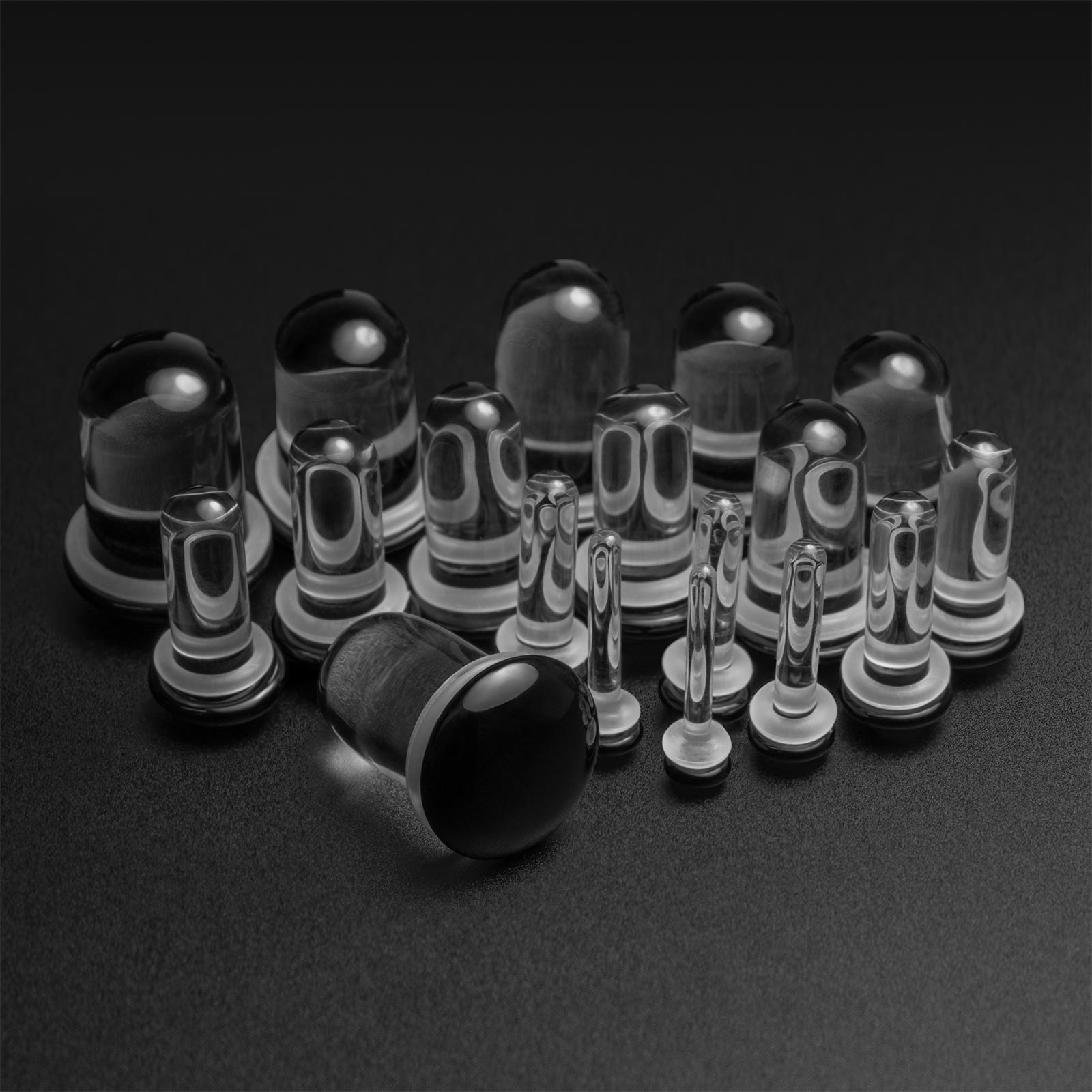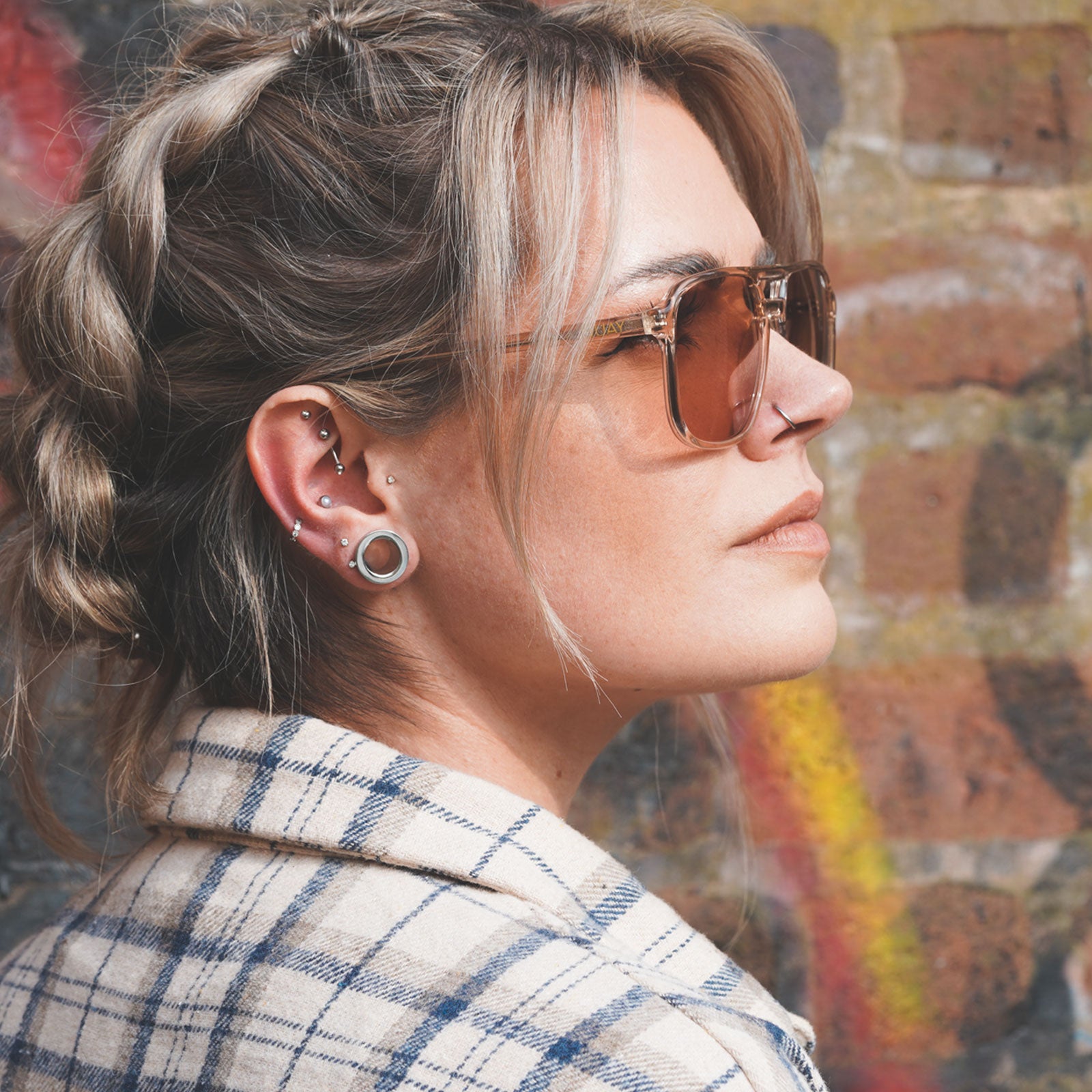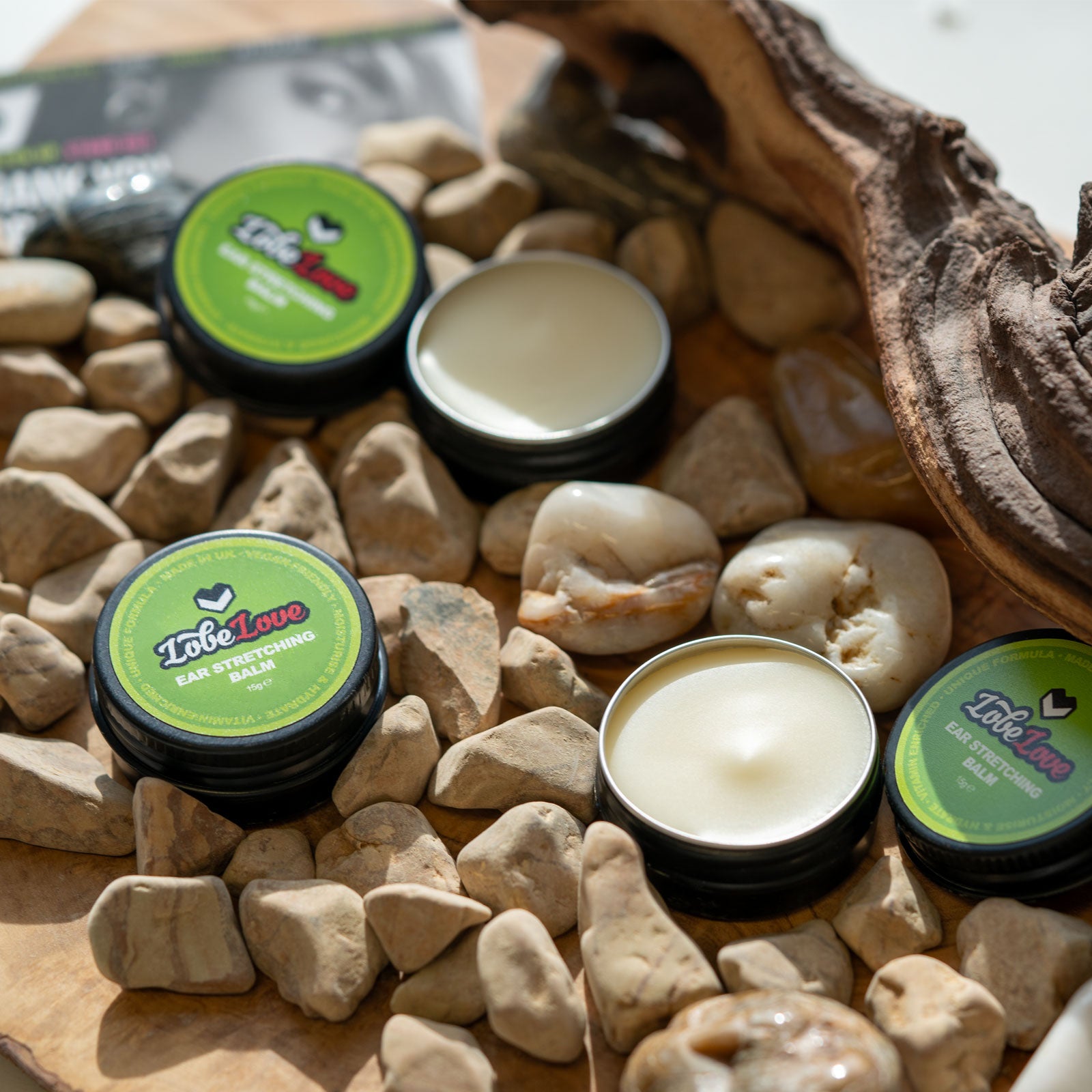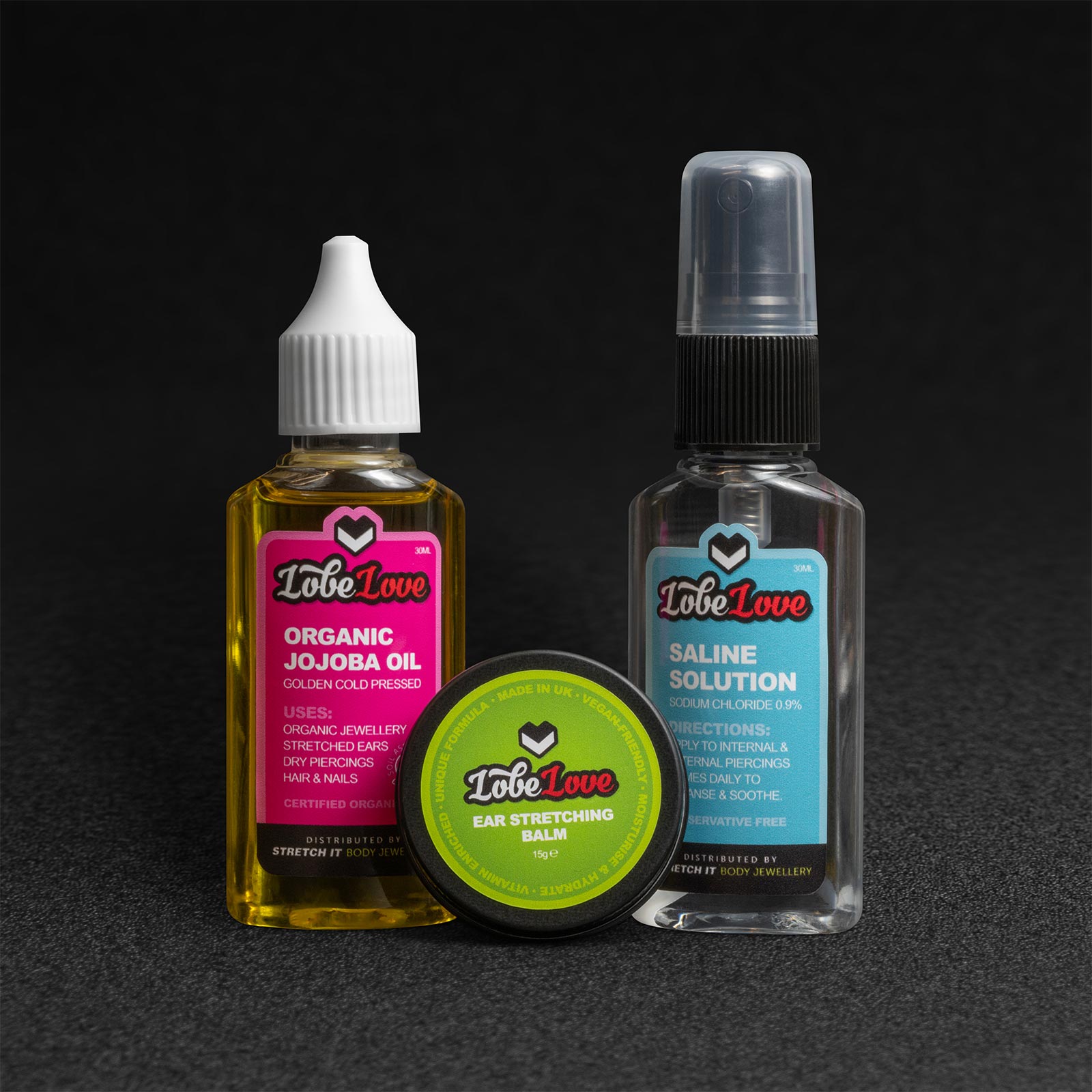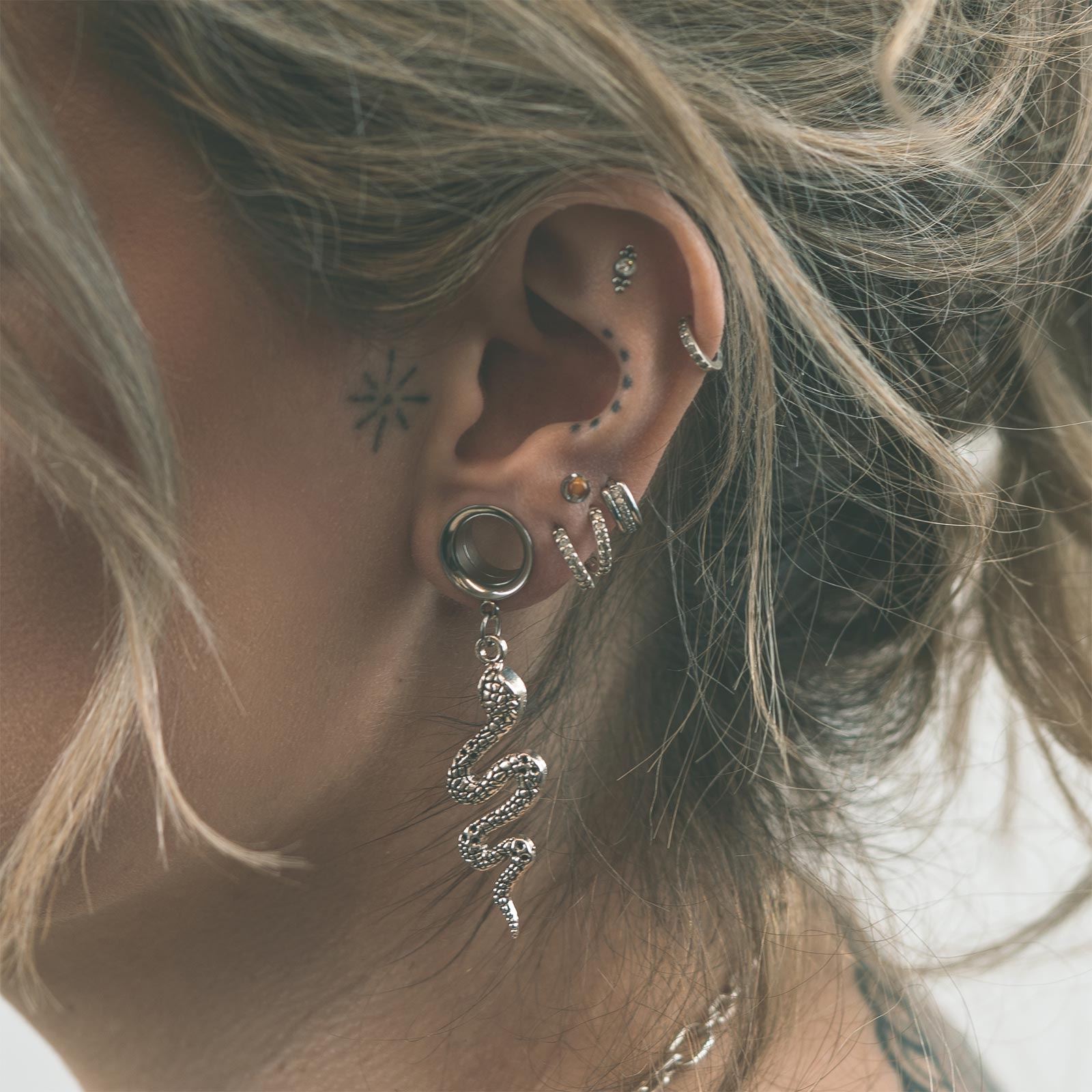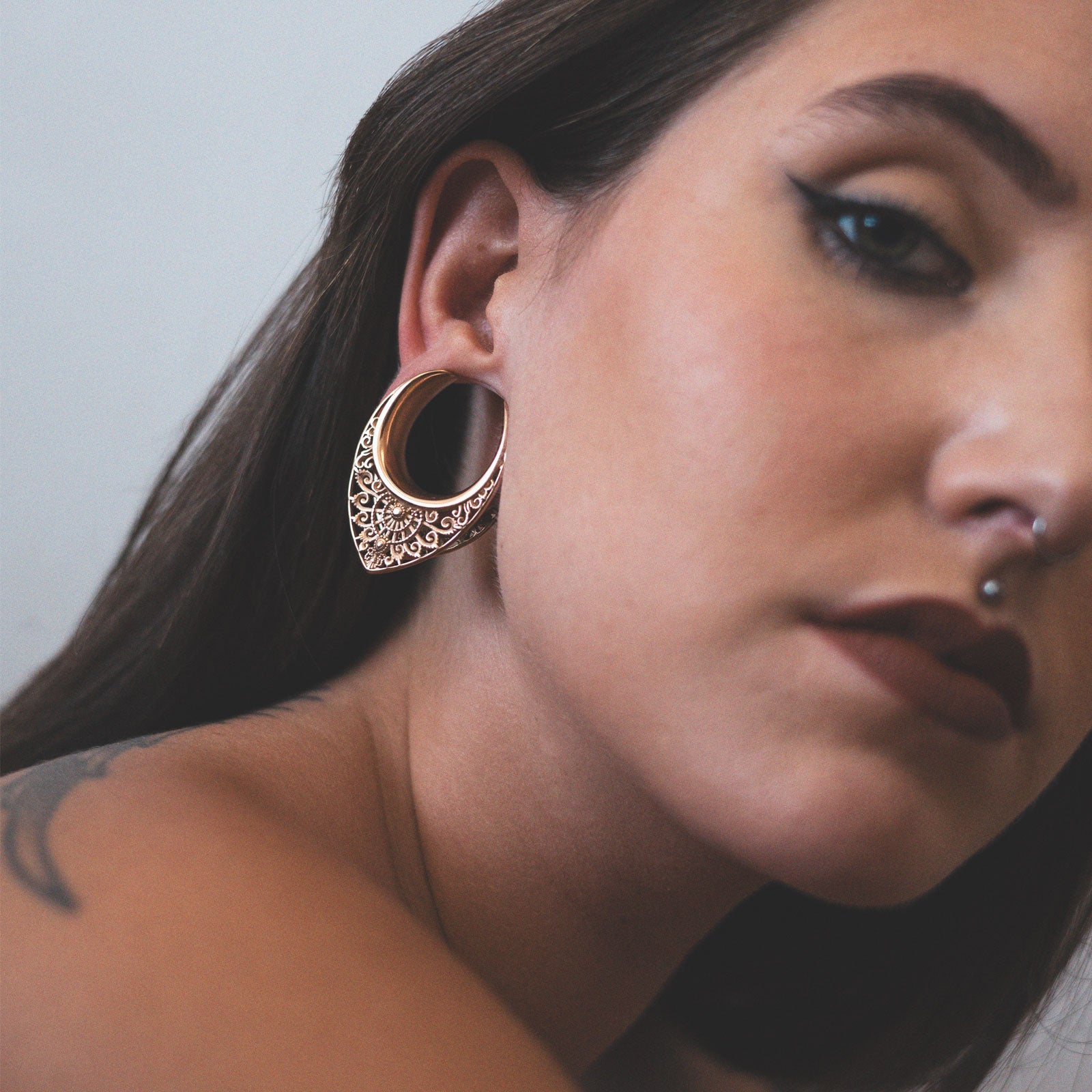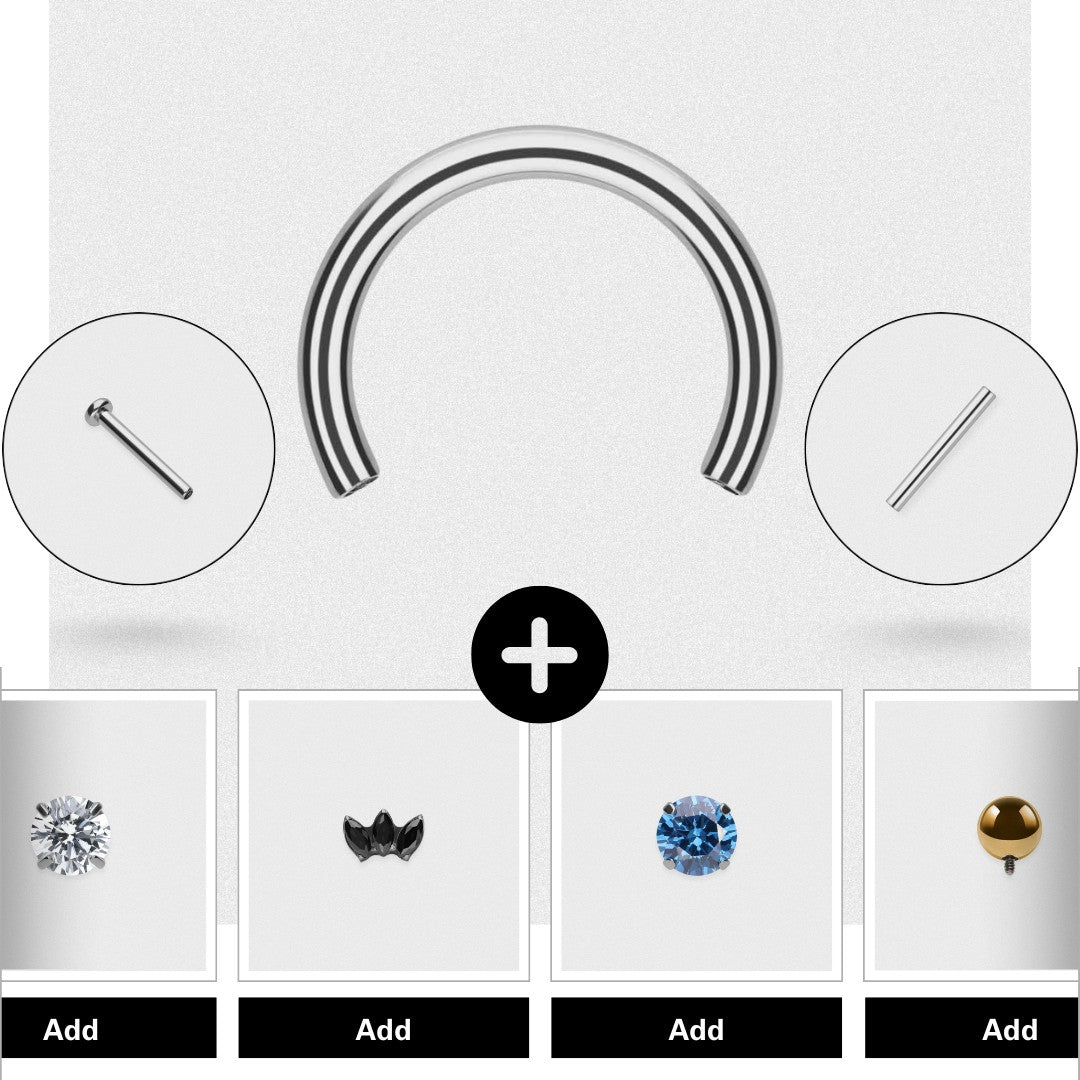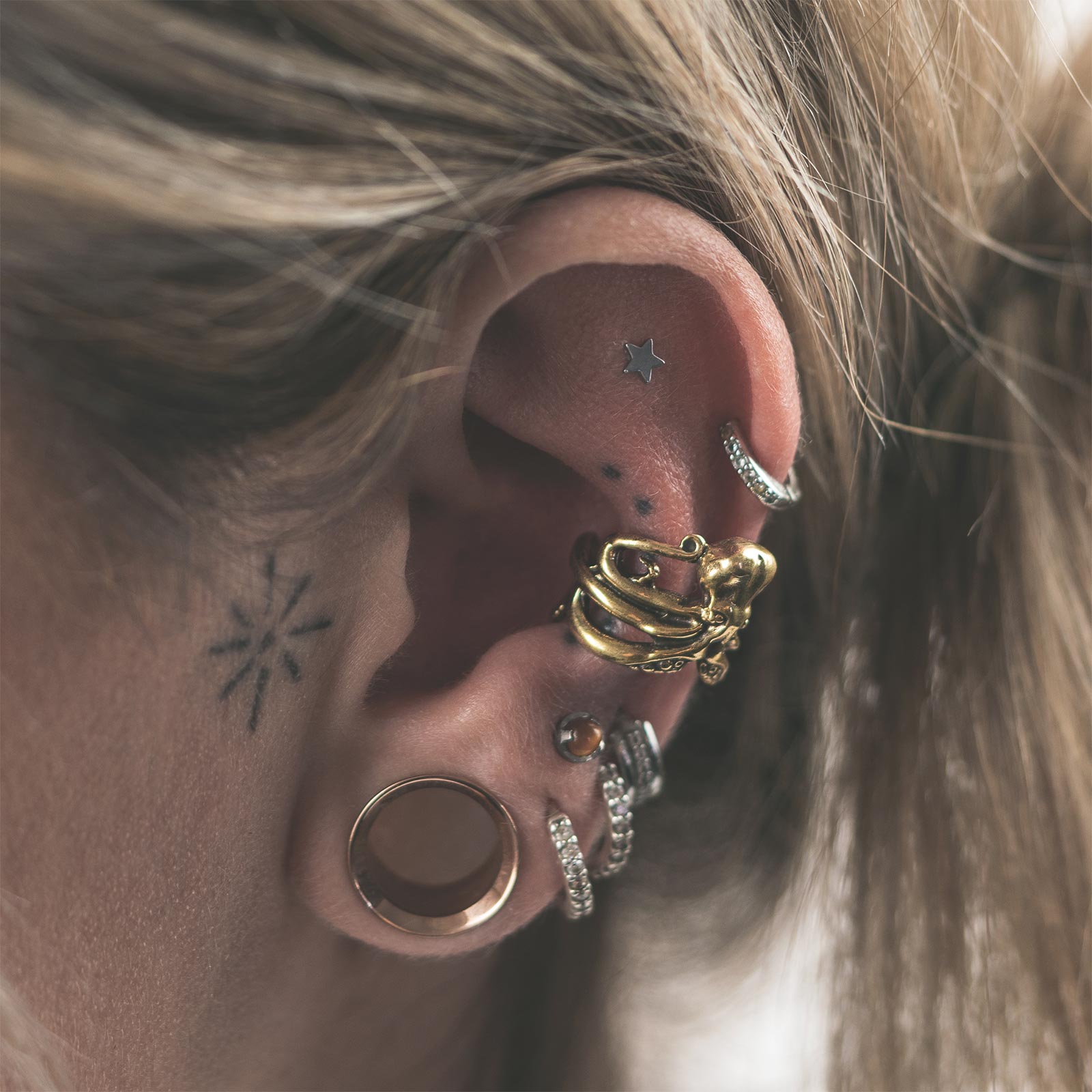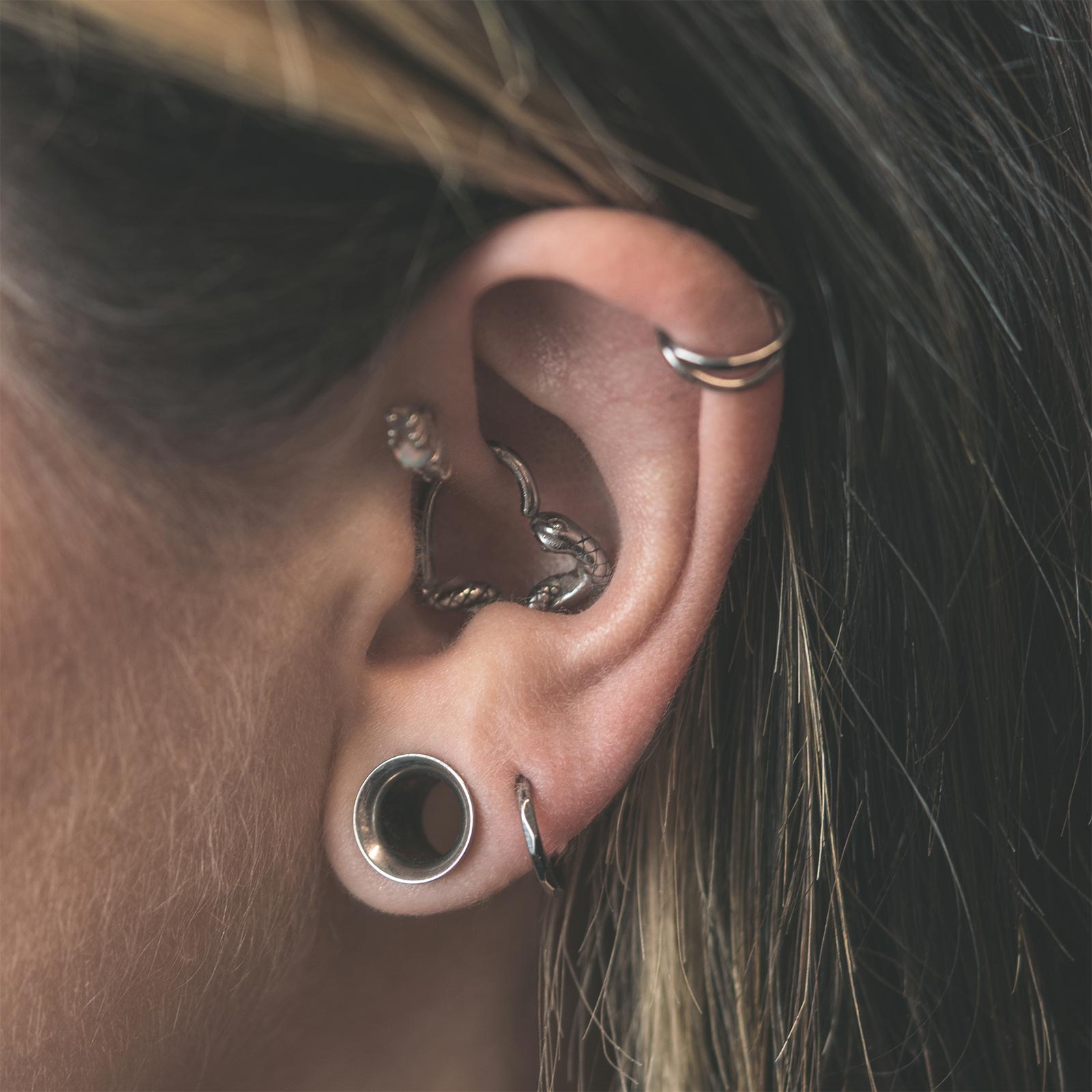"Human fascination with ink will keep pushing the boundaries of artistic expression and leaving a mark on our culture that’s more than skin deep. In this respect, you could say the history behind tattoos is only half written."
The history of tattoos goes back further than you might think, from ancient warriors to modern day rebels. And all the tattoos through history make their own unique contribution to this timeless art form inked on human canvas. But where did it all begin? Well, inking has been a form of self-expression for literally millennia. So, come along for the ride as we take a step back in time through the history of tattoos and explore the fascinating back stories of ink-stained body mods.
Discussed In This Post
How Did the History of Tattoos Begin?

In truth, it’s difficult to say, because the history behind tattoos is almost as vast as the aeons it spans!
What we do know is the origins of tattoos are a far cry from today’s fancy machines and sterile studios. Ancient tattooing was a raw, primal affair long before electricity and skilled tattoo artists. Back then, the techniques were very rudimentary (to put it mildly!).
Sharp tools and needles were made from natural materials like boar tusks, thorns, and even sharpened fish bones, while pigments came from charcoal, ash, and crushed berries!
These methods were slow, painful, and unsurprisingly carried a hefty risk of infection. That said, the ritual of traditional tattooing was as important as the art itself for many. And ancient peoples across all corners of the globe started quickly cottoning on to the early inking phenomenon.
Ink Stains Across Ancient Civilizations

As a result, tattoos started leaving their mark down the centuries (pun intended!), with many diverse cultures far and wide taking their place in the history of tattoos, including:
China
There’s evidence of ancient tattoo practices dating back thousands of years, despite tattoos historically being stigmatised in China due to associations with criminals and marginalised groups.
Japan
Traditional Japanese tattoos often featured mythical creatures, bold imagery, and intricate watercolours. They were once associated with the criminal underworld. (Ever seen the HBO crime drama Tokyo Vice on the BBC? The yakuza characters bear this out). But they’ve since gained widespread appreciation as a form of artistic expression, going as far as ‘Irezumi’ = full body ink.
Egypt
Early Egyptian tattoos, particularly on women, are thought to have held religious or medicinal significance, although ink became associated with criminals and slaves in later periods. In fact, some scholars believe the Egyptian tattoo’s history and origin were rooted in ceremonial purposes or as a form of protection.
Polynesia
Intricate tattoos in countries like Samoa signified status, lineage, and personal achievements. These elaborate designs were often applied over months or even years, which as you can imagine, called for some serious dedication, grit and knuckle-biting.
Yet the history of tattoos of one specific ancient powerhouse continues to cause controversy in the 21st century.
Ancient Roman Myth Versus Reality
The image of Roman centurions emblazoned with the iconic SPQR tattoo is part of popular culture, largely due to Hollywood blockbusters like Gladiator. But truthfully, historical evidence suggests this portrayal of ancient Roman tattoos is more myth than fact.
As for the SPQR tattoo (which stands for “Senatus Populusque Romanus" = the Senate and People of Rome), it was massively significant at the time. But there's little to no evidence Roman soldiers flashed an SPQR tattoo every time they got their guns out.
Conversely, Ancient Roman tattoos were often associated with slavery, criminals and barbarians, (similar to the other cultures we’ve already mentioned, where the history of tattoos involved ‘the wrong sorts’).
All the same, there’s a strong possibility soldiers stationed on the frontiers, in close contact with tattooed barbarian tribes and even marrying into them, might have picked up some of their ‘bad habits’!
The SPQR Tattoo Today
In recent times, the Roman eagle and SPQR historic tattoos have taken a turn since being appropriated by far-right groups and white supremacist groups, making it a symbol of hate for many.
Slightly further back in the 20th century history of tattoos, the Italian Fascists and Nazi party both used Roman imagery, including the eagle, to represent imperial power and arouse nationalistic fervour. This association has tainted the idea of an SPQR tattoo for many, making it a problematic historic tattoo to have today.
So, it’s not a scandal that’s likely to blow over any time soon.
Smooth Sailing in the Age of Exploration

Sailors have also been closely associated with tattoos. And not without good reason, because they directly influenced the history of tattoos when the age of exploration brought them face-to-face with diverse cultures and traditions.
They brought back more than souvenirs when they returned home. In addition, they brought the art of tattooing to the Western masses. Early tattoo parlours began to emerge, serving a growing bunch of curious and adventurous takers. But as you can imagine, there was nothing comfy or hygienic about these dodgy backstreet establishments.
That said, the seafaring men who frequented them carved out their place in the history behind tattoos, with their ink often representing journeys, good luck, and protection such as:
Anchors
Symbolised steadfastness and a safe return to port
Dragons
Represented strength and courage
Swallows
Believed to guide sailors home
In fact, sailors are so synonymous with the tattoo’s history and origins that you’ll still see these designs around today.
But the origins of tattoos aren’t just a guy thing. More recently, sisters have grown tired of being relegated to the sidelines of history. So, they’re doing it for themselves.
Rise of the Women Warrior Tattoo

Forget cutesy-poo flowers and butterflies! Today's women are choosing the ultimate girl power inking. For this purpose, the women's warrior tattoo is a battle cry and a testament to their inner strength.
The rise of the women warrior tattoo has become a reclamation of history, and a celebration of the fierce women who fought for freedom, justice, and equality, from Amazonian warriors in Greek mythology to Viking shield maidens and fearless Celtic queens.
You don’t have to look too closely to see how this type of historic tattoo pays homage to women who defied expectations and shattered glass ceilings (long before they were even a thing). And it’s a really cool reminder that strength and courage know no gender.
Besides being an emblem of inner strength, the placement of a women's warrior tattoo is also meaningful:
Strong arms of self-ability
Many women opt for tattoos on their arms, a powerful symbol of physical strength and the ability to defend themselves.
Back to the future
The back has become a vast and expressive canvas down the history of tattoos. This makes it the ideal body part to make a big statement about your inner strength, resilience, and the hidden depths of your spirit.
Thigh deep in matriarchal might
Tattoos on the thighs are often associated with fertility and power. They can be used to represent your connection to your body and your role as a creator and protector (if that’s your vibe).
The possibilities are endless, from daring, graphic designs inspired by ancient cultures to intricate portraits of legendary women. You can make each tattoo a unique reflection of your individuality and personal story.
Moving forward, the women's warrior tattoo movement continues to gather momentum. And the designs and styles will undoubtedly keep evolving to reflect female identity and challenge societal norms.
From the Fringe to the Mainstream
The mid-20th century saw tattoos really starting to come overground and shift away from their traditional ‘bad boy’ image, where they’d been long associated with rebellion, criminality, and the counterculture.
But the rise of rock 'n' roll stars like Elvis Presley and the Rolling Stones helped popularise tattoos, blurring the lines between misbehaviour and mainstream acceptance. Their rebellious image, coupled with their visible ink, made tattoos a symbol of cool and nonconformity.
In addition (and probably partly due to this), there was a resurgence of interest in traditional tattooing. Tattoo artists started rediscovering and refining classic styles. There was a renewed appreciation for gutsy lines, vibrant colours, and classic motifs.
The groundwork was laid for the explosion of tattooing in the 21st century.
21st Century Ink
Today, tattoos are more widespread and accepted than ever, despite the chequered history of tattoos from their ancient beginnings to the ‘anything goes’ 2020s.
It says it all when even The Times prints an in-depth article From ‘tramp stamp’ to high art: the oddly respectable history of tattoos!
Tattoos are well and truly here to stay, with current factors including:
Celebs and social media
The rich, famous, and glamorous, from David Beckham, Harry Styles, Post Malone, and Travis Barker, to Rihanna, Billie Eilish, Angelina Jolie, and Ariana Grande have brought tattoos into living rooms. Similarly, social media platforms like Instagram, Pinterest and TikTok have blown up the tattooing trend, allowing artists to showcase their work and connect with clients.

Technological advancements
The tech revolution has transformed the art of tattooing, with advanced tattoo machines and higher-quality inks equipping artists to create stunning, realistic, and intricate designs. This is because modern machines allow for greater precision and control. Plus, advancements in ink technology have resulted in a wider range of longer-lasting colours. So, you can only wonder how the AI era will write the next chapter of the history behind tattoos.

A craving for self-expression
Tattoos are powerful external representations of your individuality, identity, and personal narrative. So, people are doubling down on tattoos to tell their stories, commemorate important events, and wear their beliefs and values. Delicate floral design? Check. Meaningful quote? Double check. Portrait of a loved one? You can have that too!

Oh, and did we mention there’s a whole bunch of pampering products those who braved tattoos through history didn’t have the benefit of?
Give Your Tattoo the TLC it Deserves
Long gone are the days when tattoo aftercare meant gritting your teeth through infection, basic remedies, and guesswork! Thankfully, there’s a lineup of stellar products these days to help your tattoo heal effortlessly and be its best self.
Look at:
Hustle Bubbles Deluxe® Foam Wash - This all-natural, vegan-friendly cleanser combines powerful antimicrobial properties with soothing, hydrating care. It cleanses and calms skin for every stage of your tattoo journey - from pre-tattoo prep to post-ink healing - without the hassle of mixing or diluting. (P.S. Your piercings will love it too!)
After Inked® Premium Tattoo Aftercare Lotion - A next-level formula trusted by tattoo artists and enthusiasts worldwide. It provides unmatched hydration while preserving the vibrancy of your ink. Plus, it’s non-greasy, fast-absorbing, and gentle enough for sensitive skin. Result!
Vegan Tattoo Aftercare® - This BUAV gold award winner is the first triple-action vegan formula designed to keep your tattoos bold and bright while rejuvenating older ink.
These products are ingenious for keeping your skin healthy and your tattoos looking the bomb for years to come.
And speaking of years to come…
Where Will the Future of Ink Lead?
So, we’ve looked at the history of tattoos right up to the present day. But where does the future of tattooing lie? Will we see even more extreme forms of body modification? Will technology blur the lines between flesh and machine? Only time will tell.
Yet one thing’s certain. Human fascination with ink will keep pushing the boundaries of artistic expression and leaving a mark on our culture that’s more than skin deep. In this respect, you could say the history behind tattoos is only half-written.
At Stretch It Body Jewellery, you’ll find many resources and innovative, future-fit products to honour your skin and your story. Ready to start your journey? Check out the website for more ways to keep your ink bold and your skin top-of-the-shop while you write your own pages in the history of tattoos with confidence and intention.
Subscribe To Our Awesome Mailer
No spam. Just discounts, exclusive promotions and ear stretching tips & tricks you won't want to miss.


